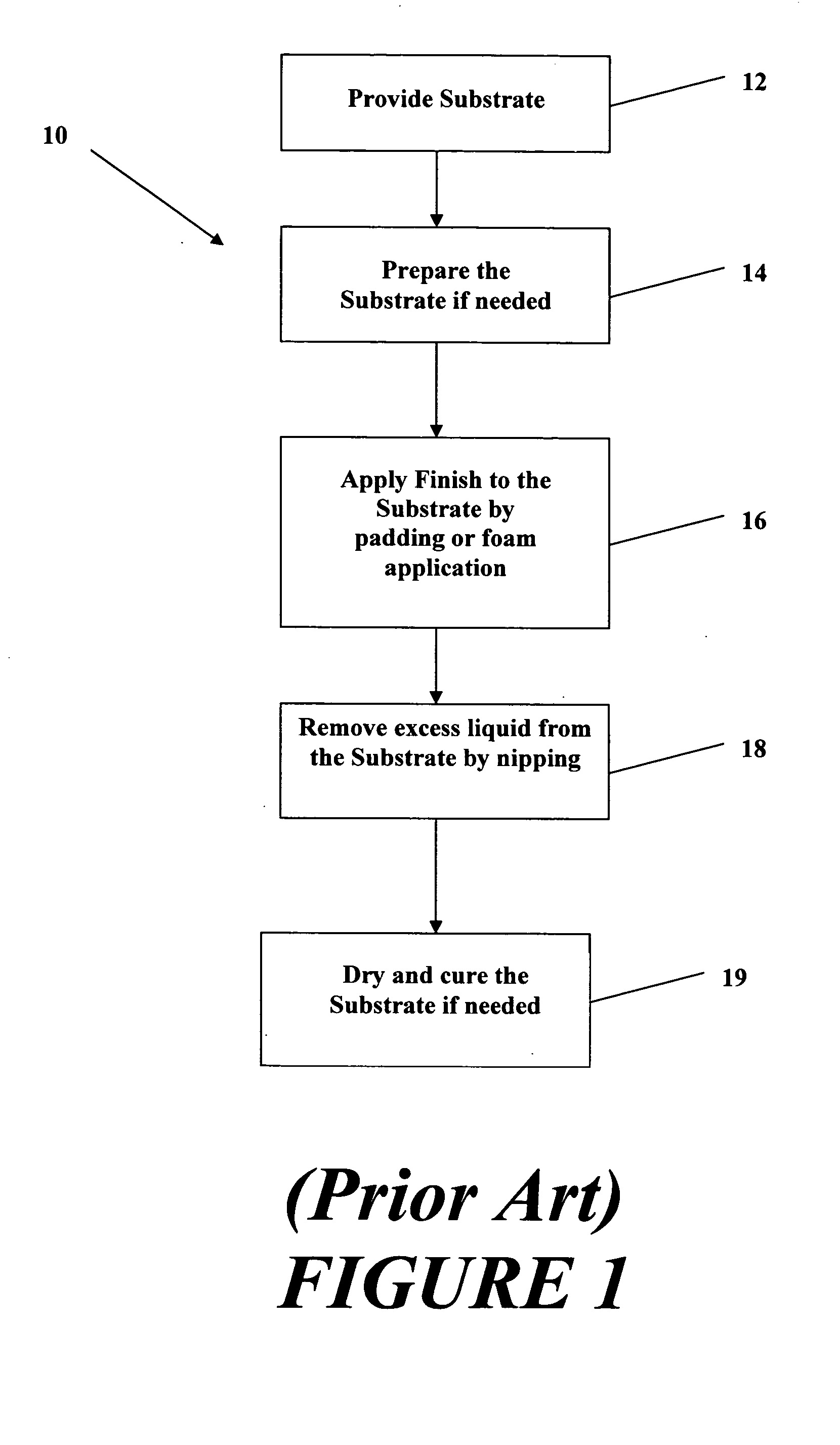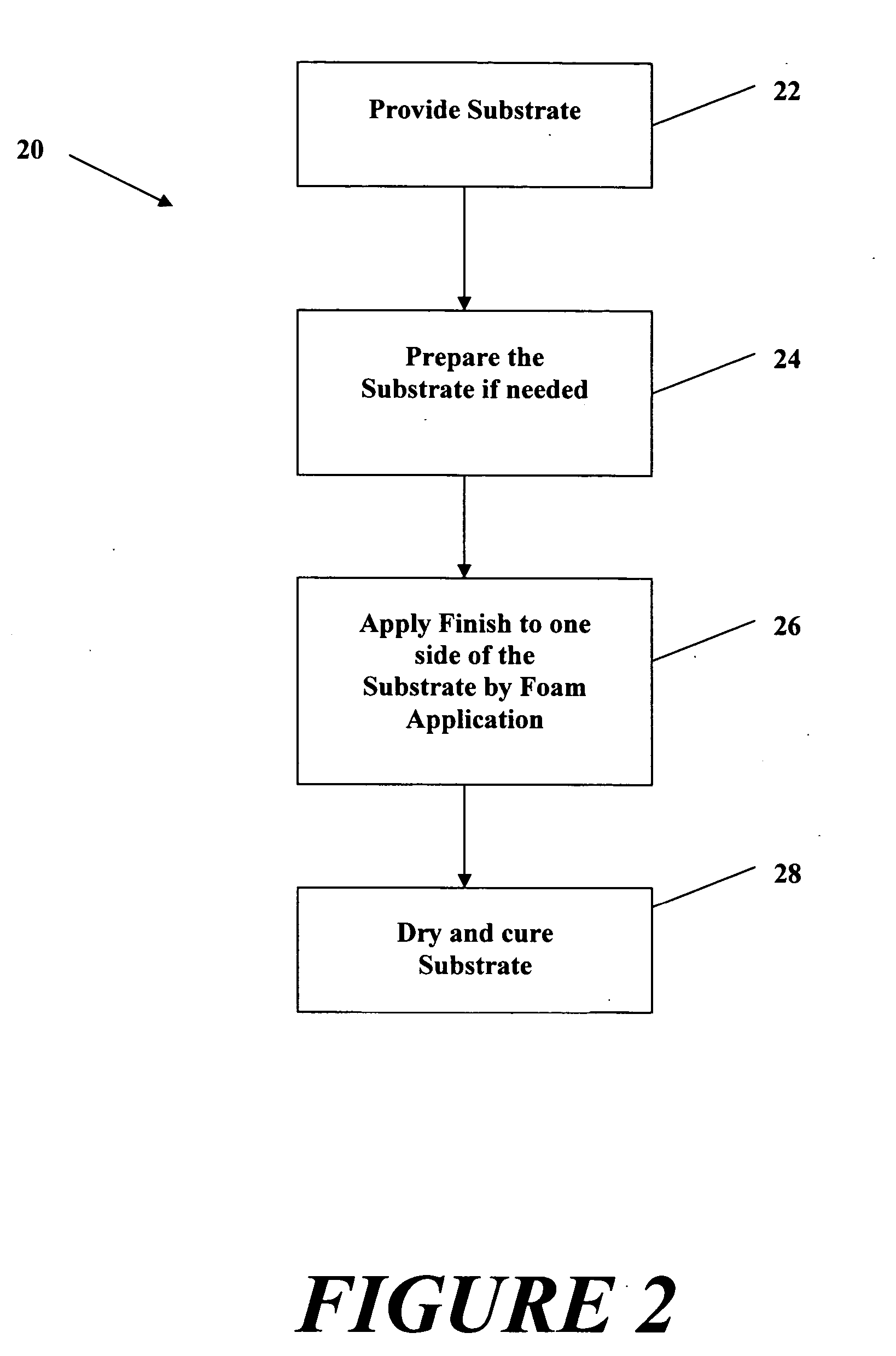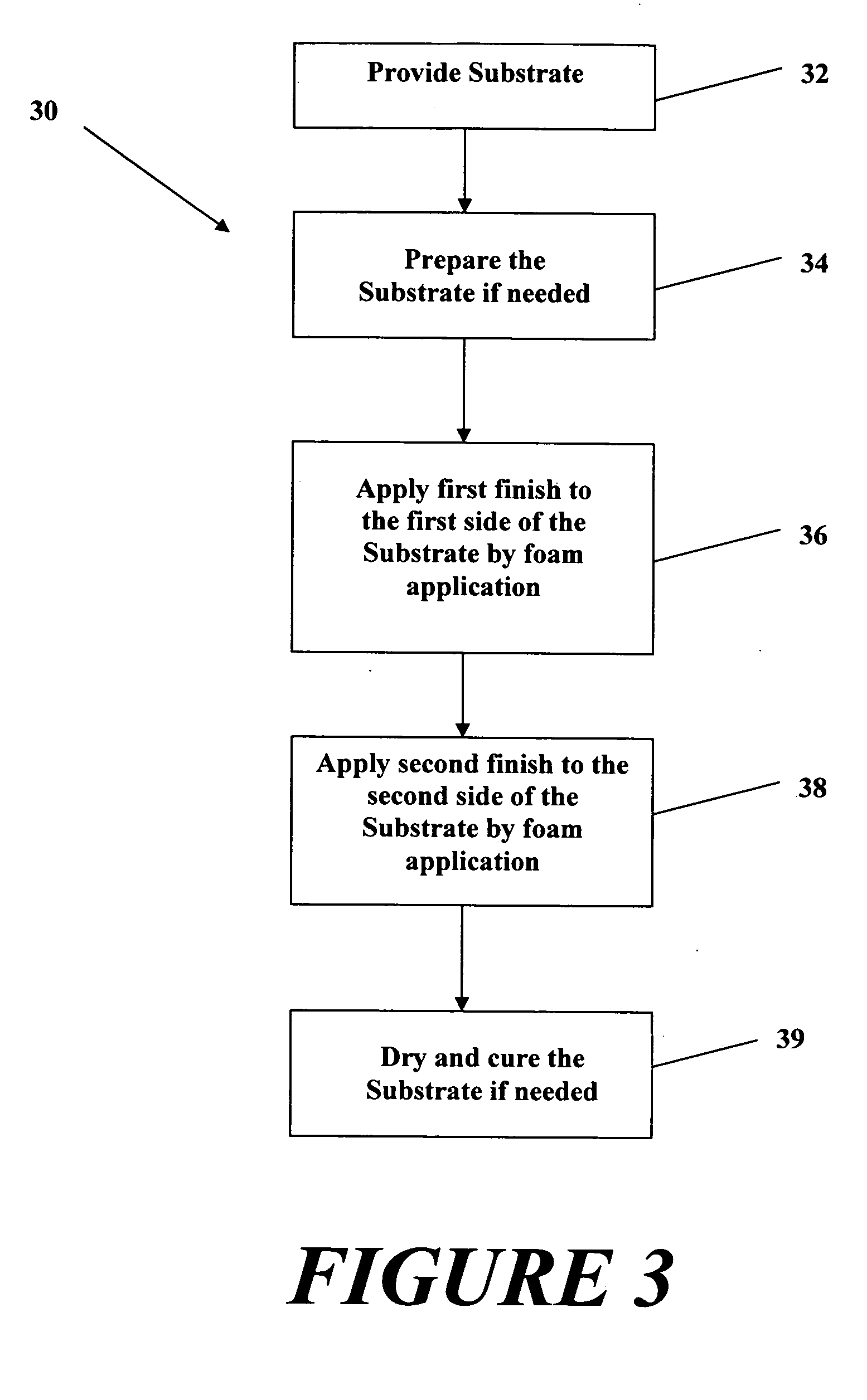Fabric side-finishing method and products
a side-finishing and fabric technology, applied in the field of fabric finishing, can solve the problems of not being able to control the penetration of foam through the substrate, not being able to apply a finish, and not being able to achieve any practical means or methods
- Summary
- Abstract
- Description
- Claims
- Application Information
AI Technical Summary
Benefits of technology
Problems solved by technology
Method used
Image
Examples
experiment 1
[0054] A bleached cotton woven shirting fabric from a commercial source, of weight about 107 g / sq meter was provided in 2 pieces to form Samples A and B as described below. Each sample was prepared and cleaned in a conventional manner prior to application of any finish. The listed percentages of the foam and bath constituents are by weight.
[0055] Sample A: The sample was untreated, but was tested for wicking behavior in a foam. The foam was formed with 30% Nuva HPU (a perfluorocarbon product available by the Clariant Corporation, Charlotte, N.C.), 2% Afilan KC (an amine oxide available by the Clariant Corporation, Charlotte, N.C.), and 68% water, at blow ratio 10 / 1. The foam was characterized with a bath viscosity of 14 cp, and a foam half life of about 6 minutes. This wicking evaluation was conducted in the manner that one end of the sample was dipped into the foam for one inch length for one minute. And then the sample was removed from the foam and allowed to be air-dried. Any li...
experiment 2
[0058] A bleached cotton woven shirting fabric from a commercial source, of weight about 107 g / sq meter was provided in 3 pieces to form Samples C-E as described below. Each sample was prepared and cleaned in a conventional manner prior to application of any finish. The listed percentages of the foam and bath constituents are by weight.
[0059] Sample C: The sample was untreated and tested for hydrophobicity by utilizing a drop test. The drop test was conducted in the manner set forth in AATCC Test Method 79: Absorbency of Bleached Textiles. The observation was recorded into Table 2.
[0060] Sample D: Sample D was foam-applied to one side (Side A) of the fabric in accordance with a prior art method. The foam was formed with 30% Nuva HPU (a perfluorocarbon product available by the Clariant Corporation, Charlotte, N.C.), 2% Afilan KC (an amine-oxide available by the Clariant Corporation, Charlotte, N.C.), and 68% water, at blow ratio 10 / 1. The foam was characterized with a bath viscosit...
experiment 3
[0063] Plain woven polyester fabric of textured yarn of about 184 g / sq meter was provided in three pieces to form Samples F-H as described below. Each sample was prepared and cleaned in a conventional manner used to prepare woven polyester fabrics prior to application of any finish and had a hydrophobic nature after rinsing surfactant residue from previous preparatory steps. The listed percentages of the foam and bath constituents are by weight.
[0064] Sample F: Sample F was untreated and tested for water absorbency by utilizing a drop test. The drop test was conducted in the manner set forth in AATCC Test Method 79: Absorbency of Bleached Textiles. The observation was recorded into Table 3.
[0065] Sample G: Sample G was foam-applied to one side (Side A) of the fabric for hydrophobicity in accordance with the present invention. The foam was formed with 30% Nuva HPU (a perfluorocarbon product available by the Clariant Corporation, Charlotte, N.C.), 10% SR 1429 (a sodium polyacrylate)...
PUM
 Login to View More
Login to View More Abstract
Description
Claims
Application Information
 Login to View More
Login to View More - R&D
- Intellectual Property
- Life Sciences
- Materials
- Tech Scout
- Unparalleled Data Quality
- Higher Quality Content
- 60% Fewer Hallucinations
Browse by: Latest US Patents, China's latest patents, Technical Efficacy Thesaurus, Application Domain, Technology Topic, Popular Technical Reports.
© 2025 PatSnap. All rights reserved.Legal|Privacy policy|Modern Slavery Act Transparency Statement|Sitemap|About US| Contact US: help@patsnap.com



